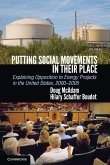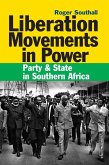Short description/annotation
This book examines how movements are organized and the role of movement processes within organizations.
Main description
Although the fields of organization theory and social movement theory have long been viewed as belonging to different worlds, recent events have intervened, reminding us that organizations are becoming more movement-like - more volatile and politicized - while movements are more likely to borrow strategies from organizations. Organization theory and social movement theory are two of the most vibrant areas within the social sciences. This collection of original essays and studies both calls for a closer connection between these fields and demonstrates the value of this interchange. Three introductory, programmatic essays by leading scholars in the two fields are followed by eight empirical studies that directly illustrate the benefits of this type of cross-pollination. The studies variously examine the processes by which movements become organized and the role of movement processes within and among organizations. The topics covered range from globalization and transnational social movement organizations to community recycling programs.
Table of contents:
Part I. Creating a Common Framework: 1. Organizations and movements Doug McAdam and W. Richard Scott; 2. Where do we stand(?)33; Common mechanisms in organizations and social movements research John L. Campbell; Part II. Political and Mobilization Context: 3. Institutional variation in the evolution of social movements: competing logics and the spread of recycling advocacy groups Michael Lounsbury; 4. Elite mobilizations for antitakeover legislation, 1982-1990 Timothy Vogus and Gerald F. Davis; 5. Institutionalization as a contested, multilevel process: the case of rate regulation in American fire insurance Marc Schneiberg and Sarah A. Soule; 6. From struggle to settlement: the crystallization of a field of lesbian/gay organizations in San Francisco, 1969-1973 Elizabeth Armstrong; Part III. Social Movement Organizations: Form and Structure: 7. Persistence and change among federated social movement organizations John McCarthy; 8. Globalization and transnational social movement organizations Jackie Smith; Part IV. Movements Penetrating Organizations: 9. How do social movements penetrate organizations(?)33; Environmental impact and organizational response Mayer N. Zald, Calvin Morrill, and Hayagreeva Rao; 10. Organizational change as an orchestrated social movement: recruitment to a corporate quality initiative David Strang and Dong-Il Jung; 11. Subventing our stories of subversion Maureen A. Scully and W. E. Douglas Creed; Part V. Conclusion: 12. Social change, social theory, and the convergence of movements and organizations Gerald F. Davis and Mayer N. Zald; 12. Two kinds of stuff: the current encounter of social movements and organizations Elizabeth Clemens.
This book examines how movements are organized and the role of movement processes within organizations.
Main description
Although the fields of organization theory and social movement theory have long been viewed as belonging to different worlds, recent events have intervened, reminding us that organizations are becoming more movement-like - more volatile and politicized - while movements are more likely to borrow strategies from organizations. Organization theory and social movement theory are two of the most vibrant areas within the social sciences. This collection of original essays and studies both calls for a closer connection between these fields and demonstrates the value of this interchange. Three introductory, programmatic essays by leading scholars in the two fields are followed by eight empirical studies that directly illustrate the benefits of this type of cross-pollination. The studies variously examine the processes by which movements become organized and the role of movement processes within and among organizations. The topics covered range from globalization and transnational social movement organizations to community recycling programs.
Table of contents:
Part I. Creating a Common Framework: 1. Organizations and movements Doug McAdam and W. Richard Scott; 2. Where do we stand(?)33; Common mechanisms in organizations and social movements research John L. Campbell; Part II. Political and Mobilization Context: 3. Institutional variation in the evolution of social movements: competing logics and the spread of recycling advocacy groups Michael Lounsbury; 4. Elite mobilizations for antitakeover legislation, 1982-1990 Timothy Vogus and Gerald F. Davis; 5. Institutionalization as a contested, multilevel process: the case of rate regulation in American fire insurance Marc Schneiberg and Sarah A. Soule; 6. From struggle to settlement: the crystallization of a field of lesbian/gay organizations in San Francisco, 1969-1973 Elizabeth Armstrong; Part III. Social Movement Organizations: Form and Structure: 7. Persistence and change among federated social movement organizations John McCarthy; 8. Globalization and transnational social movement organizations Jackie Smith; Part IV. Movements Penetrating Organizations: 9. How do social movements penetrate organizations(?)33; Environmental impact and organizational response Mayer N. Zald, Calvin Morrill, and Hayagreeva Rao; 10. Organizational change as an orchestrated social movement: recruitment to a corporate quality initiative David Strang and Dong-Il Jung; 11. Subventing our stories of subversion Maureen A. Scully and W. E. Douglas Creed; Part V. Conclusion: 12. Social change, social theory, and the convergence of movements and organizations Gerald F. Davis and Mayer N. Zald; 12. Two kinds of stuff: the current encounter of social movements and organizations Elizabeth Clemens.








